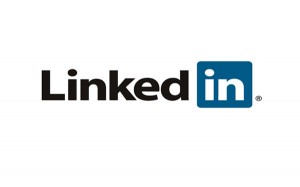Guest Post today from Connie Costigan who is the Director of Marketing Communications for Halogen Software. This is not a sponsored post – this guest spot was given because I think Halogen is one of the few HR Software companies that get Talent Management, plus Connie is a good writer. Check it out:
I admit it. If I read one more book, blog post, or article on how to… motivate, engage, inspire, be a better leader, get results through my people… I might pass out from exhaustion. And it’s not that I’m not passionate about these topics.
It’s just that as a manager — not an HR pro — working in the talent management space, I probably review a lot more material on these subjects than most.
And so… I want to do it all — test every reasonably sound management practice I’ve ever read or heard about. In the past year alone my physical and virtual “management” bookshelf has become so full my brain can’t contain it all…. Thinking Fast and Slow, Drive, The Carrot Principle, All In, The Rules of Management, an HBR Management Tip of the Day, my awesome “Leader as Coach” training binder, FOT and the FOT contributor blogs, a slew of other great HR sites… it’s never-ending.
I know HR peeps, I know. This isn’t an issue for a lot — if not most — of your managers. You spend an inordinate amount of time babysitting them, trying to protect them from themselves, trying to get them to be stewards of your talent programs. And hoping they won’t screw up things that you care about — like closing that elusive candidate faster, improving engagement scores, reducing your voluntary turnover metrics, getting a decent ROI for the leadership development program you just rolled out… your list is endless too.
So, as a manager who wants to get better so I can make my team even better, I’ve decided to focus on just 5 key management mantras I can remember, to move the fly wheel bit by bit, and make my HR team proud. Here’s a rundown, and some of the resources I use for each.
Lead with “Why”. Some very smart people have taught me that the best leaders start with “why”. That means nurturing a culture of belief with my team that begins with why the organization exists (not just what and how we do it — but why!) Then they’ll understand why we’re going to do a, b and c to support it, and they’ll be inspired to come up with a brilliant x, y and z to help achieve it. So before kicking off a project, or assigning work, I explain the rationale and try my best to tie it back to the big “why”.
Understand Motivation. Yes Dan Pink has it right. There IS a surprising truth about what motivates us. But I’m not a mind-reader and I’m not going to waste my time guessing. If I care enough — and I do — I’ll ask. So I’ve started to use this Motivation Self-Assessment Worksheet with my team to figure out whether achievement, affiliation, autonomy, power, security or intellectual stimulation are their biggest motivators . (Shout out to Henryk Krajewski over at Anderson Leadership Group for sharing the worksheet). I try not to typecast and assume a team member will always be driven by the same motivator every time, but I do keep these in mind when considering assignments, projects, or how to inspire passion around an idea. And sometimes, if I can’t quite figure out their key motivator on a particular issue, I just bulldoze right over motivation, and push on to what’s best for the business. Because that’s my job too.
Foster Accountability. I think about accountability a lot. How managers should hold themselves accountable and jointly own team goals — achieved or not. How each of my employees’ goals is linked to our corporate objectives, making them accountable for those as well. How we’re all accountable to help deliver on our organization’s mission, to live our values. There’s even an element of accountability in connection to our development opportunities. If we’re investing in growth and development, and strengthening key competencies, then the team knows they’re responsible for putting their learning or new ideas into practice. Our internal commitments — to each other, to other departments, to our customers — are all about accountability. There’s no room for finger-pointing and excuses. We share an obligation to do as we say we will, and here effective managers go first. It builds trust. It builds engagement. It supports long term success.
Sustain a Culture of Recognition. I’m not talking about random ‘atta-boys’, where I run around saying ‘good job’, ‘good job’ about all kinds of work. I’m talking about recognizing the great effort and results that I want to see repeated. This is very specific and ties back to leading with why. When I give recognition for a job well done, I try to be specific about the behavior and to tie the result back to what it meant for the customer, for the business, for the team. The experts say it’s that very precise context that managers should strive to recognize. I try to be specific, and heartfelt. That can be a boon to motivation when done right. Thanks to Chester Elton and Adrian Gostick for the awesome volumes of material they’ve published on this front.
Have the Tough Conversations. When something isn’t working right — it can be a behavioral issue, a competence issue, a goal achievement issue, whatever — I need to address it… soon. So I tell myself: “put that sick feeling in the pit of your stomach aside and deal with it.” Constructive feedback shouldn’t be saved for the performance review. It’s a no-brainer. Managers should KNOW this because it’s a fundamental tenet of “managing.” If something has gone off the rails, or could, a tough conversation has to happen. And managers need to be prepared before having one. I use two great resources to help me. The first one is the brain child of Kris Dunn and Tim Sackett actually. I was lucky enough to collaborate with Tim and Kris on this topic last year for a webinar — “The 5 Faces Managers See During Performance Reviews,” and Kris posted a great synopsis over at the Kinetix website. It helps classify the typical employee profiles that a manager might face in response to feedback during the appraisal process. But since more often than not, I’m providing feedback outside of the appraisal cycle, I also like to use a framework from Jamie Resker over at Employee Performance Solutions — The 10 Most Common Responses to Performance Feedback and How to Respond to Them. Understanding these reactions and what to do if confronted by them helps give me the confidence to initiate an important conversation, rather than sweep it under the rug (a.k.a. be a lame manager.)
There you go. My top 5 day-to-day mantras for leading and managing. HR pros — you’re never a shy bunch — what else should or shouldn’t be on this list?

